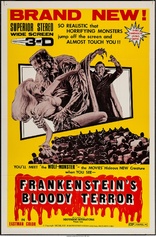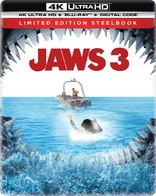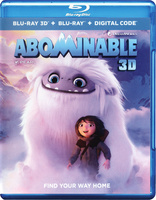 Bigger factor in 3d effect: 3D Filter tech or you vs screen scale
Bigger factor in 3d effect: 3D Filter tech or you vs screen scale
On a Facebook post I made about 3D being a big ripoff in movies I made a note that the 3d effect was a lot better at home.
I thought the reason was because of the technology of the shutter versus polar.
However someone responded to me that the reason why I find 3D more effective at home and the reason why my mom gets 3D headaches in the theater but not at home might be because of relative scale between the viewer and the screen.
The fact that you're farther and you're watching larger things might according to her say affects us both more than shutter versus polar.
That kind of made me think there's a difference between watching video games and playing video games. In theatrical presentations of video game tournaments the fans watch on mega big screen TVs, the size of a typical movie theater screen. Yet the players when they play they play on their own personal monitor about 24 inches big.
Back at me thinking I got better performance on my video games watching it on the 24 inch screen then watching it on a big 40 inch screen. It seems like in video games you have to alternate between focusing in on a spot and scanning the whole picture overall. You have to be able to see both the tree and the forest.
I know like guns mechanically work best at a range of twice the diagonal distance of the TV screen away from the TV screen. (Example of 24-in CRT TV workspace with light gun games when you are 48 inches away. Any closer and you could quote cheat by getting a clear line. Any further and the light on the TV spreads out further causing misreads.
Maybe 3D is kind of like both those situations where if it's in a small box and the heads of the people are approximately similar size to what is actually reality then the 3D looks more realistic versus a giant scale 3D head and 3D backgrounds corresponding to that size.
To me polar and giant are a one-to-one relationship same with shutter and personal. For me to get a fair answer whether it's the tech that gives better 3D depth or the scale that gives better 3D depth I would either have to watch a giant sized shutter based 3D movie or a personal sized polar based 3D movie.
But I noticed a filter that doesn't completely block one eye gives me a wrong view like for example my anaglif glasses don't work right on my Virtual Boy because when I close my right eye the red eye I could see some of support of a something that is supposed to be perfectly cyan. Which should look black on a black background.
My biggest complaint about polar is that if you took your head more than a couple degrees either way you get double exposures which causes confusion which causes slight and puzzlements in me and 3D headaches for mom maybe.
I know the red filter is not perfectly filtering out cyan causes a misread 3D image which causes a non-apparent misdecoded 3d image.
Just wondering if scale is more important or filtering type is more important in 3D visuals.
|

















 Threaded Mode
Threaded Mode